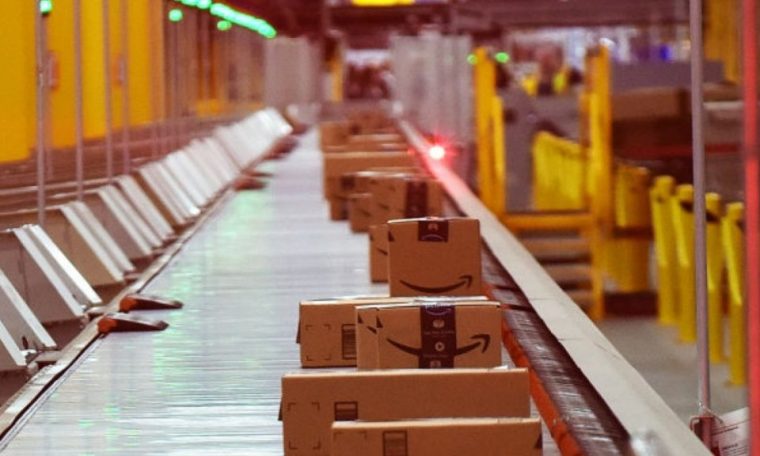
Amazon issued a rare apology on Friday for its ill-considered tweet to Wisconsin congressman Mark Pocan (D) in which the company denied that its employees are forced to urinate in bottles. The tweet was part of an ongoing Twitter war between Amazon and the congressman, in which the retail giant essentially shot itself in the foot while attempting to fight back against accusations of inhumane working conditions. Reports say Amazon’s aggressive stance came directly from Jeff Bezos himself.
As reports poured in of brutal work quotas and bottles of pee and even bags of poop being found in Amazon delivery vans, Amazon did a turnaround. It publicly apologized to the congressman for denying that the problem existed. Because the company almost never apologizes for anything, most observers were so thunderstruck that they failed to see the message for what it was–an extremely clever and effective way to change the subject.
It looks like Amazon will get away with it. If so, that delivers a short-term win but risks a long-term loss. A wise business leader should pay attention to both.
What do you do if you’re in the middle of an argument you can’t win because the facts are against you? Every good debater knows the answer: Reframe the conversation and make it about something else. You’re yelling at your spouse for not taking out the garbage when you lift the lid of the garbage can and realize that they did take it out. So, without missing a beat, you start yelling at them for the socks they left on the floor instead.
That’s the equivalent of the brilliant tactic Amazon used in its apology message. It begins with a very straightforward mea culpa.
This was an own-goal, we’re unhappy about it, and we owe an apology to Representative Pocan.
Then the company goes on to explain why it got things wrong.
First, the tweet was incorrect. It did not contemplate our large driver population and instead wrongly focused only on our fulfillment centers. A typical Amazon fulfillment center has dozens of restrooms, and employees are able to step away from their work station at any time.
And we’re off to the races. After some predictable comments about how the tweet “didn’t receive proper scrutiny” and didn’t reflect the high standards to which Amazon must hold itself, the company launched into the subject it would much prefer to talk about–the socks, rather than the garbage. The remainder of the message focused on the well-known problem of delivery drivers not being able to find public restrooms, particularly since the pandemic. This is an argument Amazon knows it can win because it’s not the only one. UPS drivers and many others have come forward to say they have this problem too.
See how beautifully Amazon deflected the debate away from the original issue, which was the brutal quotas its employees, especially warehouse employees, must meet? Its comment about plenty of bathrooms and workers being free to step away whenever they want may well be true, but neither of those things matter if people are held to such high quotas that taking the time for a bathroom break might cost them their jobs.
That’s exactly what labor leaders and some Amazon warehouse employees say is happening. One New York City warehouse worker told The Guardian that her job requires her to inspect and scan outbound packages at a rate of 18,000 per hour, which works out to one package every two seconds. It’s hard to see how someone with that quota could take ten minutes to walk across the warehouse to a bathroom, use it, and walk back again, without falling behind and earning one of the company’s “points.” Too many points can lead to dismissal.
There’s particularly damning evidence from the UK, where an anonymous survey by a workers’ rights organization found that “74 percent of employees avoid using the toilet for fear of missing their target and receiving a warning point.” And reporter James Bloodworth worked undercover in a British Amazon warehouse for six months and reported that, yes, people really do pee in bottles for fear of being fired. Whether or not there’s proof U.S. employees are doing the same, there’s no denying that an Amazon warehouse can be a grueling and dangerous place to work. One report showed that Amazon warehouse workers suffer serious injuries at twice the industry average rate.
Despite all this, Amazon’s move to change the conversation seems to be working. All the news reports I’ve seen since the apology focus on drivers having to pee in bottles and ignore warehouse conditions altogether. That’s a win for Amazon–in the short term. In the long term, the company’s reputation as a brutal workplace where people get badly hurt is affecting its standing with potential workers, political leaders, and perhaps even the general public. As the economy reopens and both workers and shoppers find themselves with more options, that could affect the bottom line.
Amazon is a famously smart company. Is it smart enough to fix its warehouse conditions before that happens?



